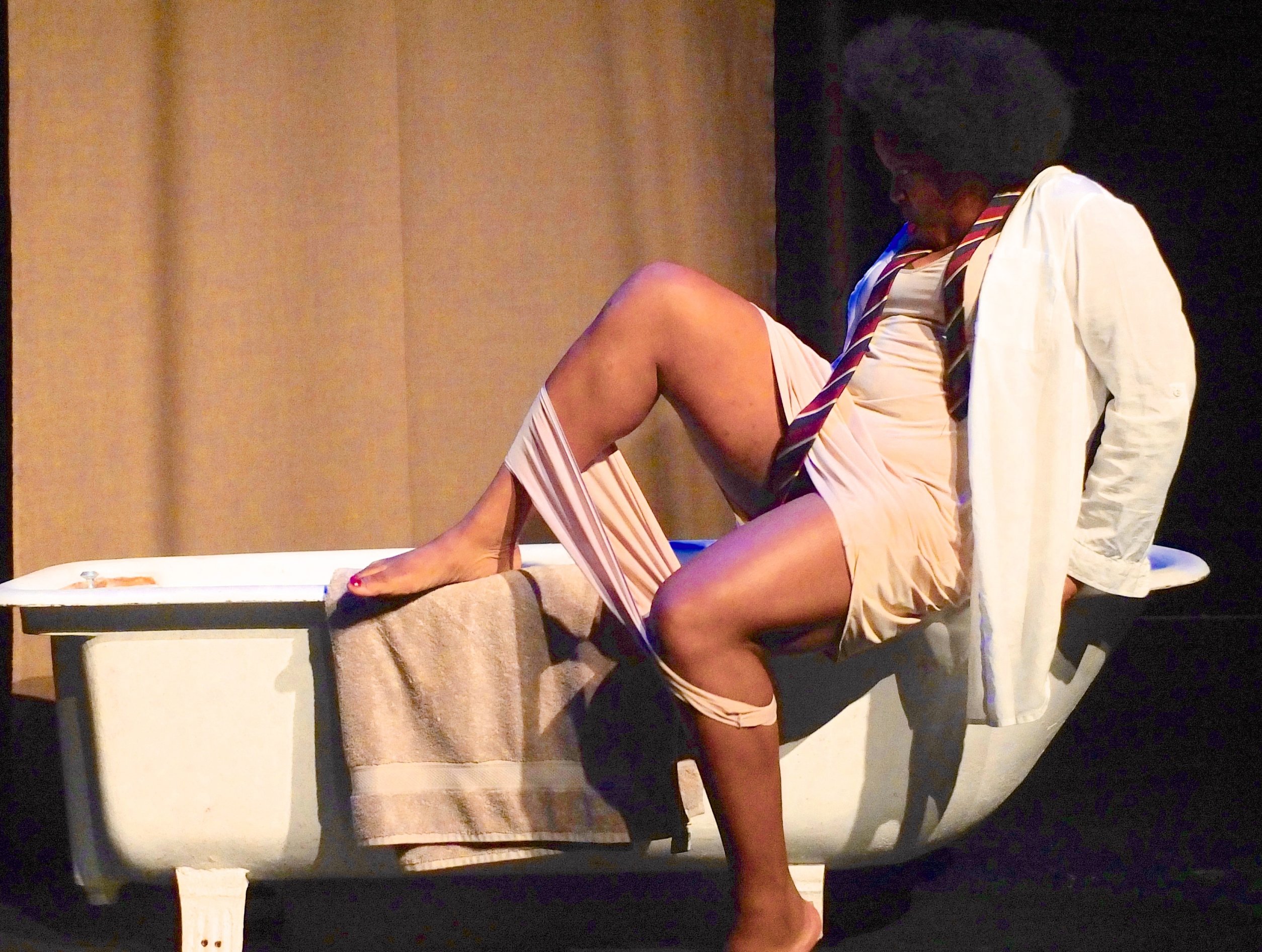
Photo: Kaya Stanley-Money
Sharing the spoils
Five London venues have jointly hosted a one-woman show – and then pooled the box office takings. Kaya Stanley-Money explains how it worked.
When Urielle Klein-Mekongo opened Yvette in Edinburgh in 2017, she made a serious impression on the industry, audiences and press.
What followed was, for us at China Plate, an unprecedented show of support for an emerging artist, with five London venues (Battersea Arts Centre, Camden People’s Theatre, Shoreditch Town Hall, The Albany and the Bush Theatre) wishing to present a short run of the show.
At the first stage the venues programmed simultaneous dates and retracted their exclusion zones
For these theatres the nurturing and supporting of young talent is fundamental to presenting the most innovative work, so to choose only one of them for just three performances, versus a total of 14 on offer, felt totally counterintuitive. It was against what we should be aiming for with an emerging artist, so we came up with a new plan.
Two touring models
The partnership we established married two existing touring models to maximise the impact and reach of the production. At the first stage the venues retracted their exclusion zones that normally prevent a show being presented within a designated radius for a period of time before and after a programmed performance.
The second stage was a shared box office model inspired by a conversation with Battersea Arts Centre about the arrangement it had with The Place for Lost Dog’s Romeo & Juliet.
These two models led us to a partnership between the five London venues to present Yvette for two or three nights at each venue over a two and half week period, sharing the box office income equally after the artist guarantee had been paid. This meant that venues at the start of the tour would benefit as much as those at the end, removing all competition and encouraging a genuine collaboration.
The performances were marketed as a London run, which enabled us to establish a comprehensive press strategy and offered the opportunity to build audiences for Urielle’s work in five different London boroughs. This was particularly important to reach a much younger audience who are typically less likely to travel far and have deeper geographical roots than your average London theatregoer.
Above all, this model offered Urielle the invaluable opportunity to build a relationship with all five venues, capitalising on their support for emerging artists.
When we started talking to venues, it became apparent that a number of them were exploring shared box office partnerships, but this was generally for a well-established artist, performing in two venues for about two weeks in each. As far as we’re aware, this is the first time a partnership has brought together multiple venues for shorter runs to support an emerging artist.
Our proposal was met with great enthusiasm. All the venues were hungry to try a new approach and the partnership encouraged a greater buy-in, with venues agreeing to a higher guarantee than they would normally offer for small studio spaces. The guarantee would be fixed against a 60/40 split in the artist’s favour, and again this is higher than the more typical 50/50 split regularly seen in London.
Shared marketing
Ticket prices were fixed across the tour and a small per-performance marketing spend was introduced to ensure equal investment for all the partners.
One of the biggest impacts this partnership has had is on the collaboration between the marketing departments in each venue. For many of these spaces, a three-night small studio run is a drop in the ocean of events taking place in their building. With busy programming schedules and limited resources, it is understandably challenging for marketing teams to dedicate time and budget to these shorter runs.
The cross-venue marketing meeting was an efficient and positive moment for the project, bringing together the marketing teams together in one space. It was an opportunity for those departments to get excited about the show, the partnership and to meet the artist. We outlined and agreed the marketing strategy and shared messaging around the tour, fixing a shared financial and capacity target to work towards.
All venues agreed to list the London tour dates with booking links on their websites and we were able to outline our approach to tour print, the aesthetic of the trailer and timelines for digital activity. Again, this whole process has felt like a genuine collaboration between all departments.
Now that the tour has closed at the Bush Theatre, we can assess the impact of this model. As a producer dedicated to working with emerging artists, I see this as a successful pilot that has created new relationships ready for risk-taking and collaborative thinking.
I’m confident this project will not only work out to be financially successful for both the venues and the artist, but will also encourage new working relationships that recognise the extreme pressure all venues are under. It has also favoured the sharing of resources and expertise to achieve much more than if the show had just turned up in a studio space for two nights.
Kaya Stanley-Money is the Executive Director of Camden People's Theatre and was previously a producer with China Plate .
www.chinaplatetheatre.com
Join the Discussion
You must be logged in to post a comment.